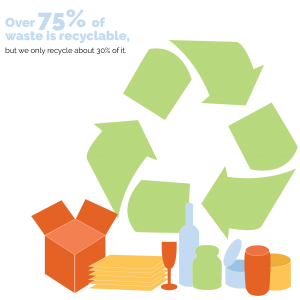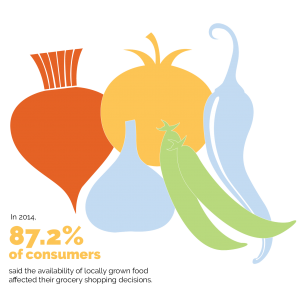Of all the food that ends up in landfills — 1.3 billion tons per year — 15 percent comes from restaurants.
A Chicago restaurant is the country’s first eatery that isn’t part of that statistic. In almost three years of operation, Sandwich Me In (SMI) has produced absolutely no garbage. The trash it hasn’t recycled, reused, or composted is picked up by local artists, who turn the scraps into sculptures. And that is only eight gallons’ worth, mostly brought in by customers, says SMI owner Justin Vrany.
SMI isn’t just another of the 400 restaurants that’s hopped on the “go green” bandwagon and earned a certificate from the Green Restaurant Association. While creating a sustainable and energy-efficient establishment is a hefty feat in itself (the GRA has high standards for energy efficiency, sustainable food and materials, and waste reduction), SMI owner Justin Vrany kicked his environmental friendliness up a notch.
Vrany’s goal is to eliminate his restaurant’s carbon footprint entirely, and he’s well on his way. Here’s how he’s making the zero-waste initiative work:

Good, old-fashioned recycling taken to the next level.
Vrany says that most of what’s put into a recycling bin still ends up in a landfill, since materials damaged by grease or water stains won’t be accepted. And sometimes Vrany worries that perfectly fine materials are still lumped into the throwaway bin. “I can’t call myself a zero-waste restaurant if I’m just throwing everything into a recycle bin and assuming the company is taking care of it,” Vrany says. That’s why he takes all his recyclables directly to the processing facilities to see it himself.
 Composting food waste.
Composting food waste.
You won’t find trash cans in SMI. Instead, you’ll find compost bins. In the winter, all the biodegradable waste — everything from uneaten food to the organic parchment paper that lines SMI’s plastic trays — is processed into dirt, which is sold to construction companies, Vrany says. In the summer, the compost feeds chickens at the farms from which SMI sources its eggs.
 Reusable packaging.
Reusable packaging.
“Reusing materials like packaging is a huge part of cutting down on our waste,” Vrany says. “For example, the companies I work with to get meat send it to me in a large plastic container. We just give it right back to them, so that way there’s no plastic packaging.” According to the EPA, containers and packaging account for at least 23 percent of landfills in the U.S., and Vrany hopes his small contribution might make a difference.

Recycling oil waste in bio-diesel engines.
Oil from fryers and other food doesn’t go down the drain at SMI. The oil is sent out to be cleaned and processed so that biodiesel engines on tractors and trucks can give it a second life.
 Refurbished furniture.
Refurbished furniture.
When building SMI’s space, Vrany reused as much as possible. The building and remodeling process only filled a quarter of a dumpster. To furnish the place, he picked up used tables and chairs from thrift stores (the restaurant’s chairs first belonged to a KFC), found secondhand doors and other fixtures in a rebuilding warehouse, and bought kitchen equipment at restaurant auctions.
 All renewable energy.
All renewable energy.
When Vrany’s wind-powered energy provider wouldn’t send him clear breakdowns about its exact sources of power, it didn’t sit well with him. He switched to Viridian, a provider that gives him exact numbers about his renewable energy use. Now Vrany knows for certain that all of SMI’s electrical energy comes from wind, solar, and biodiesel sources.

Locally sourced ingredients.
All of SMI’s meat and produce come from farms within a 200-mile radius, Vrany says. Not only do the high-quality ingredients make his dishes taste better, but minimizing travel time also reduces his carbon footprint. Choosing meat raised without antibiotics or hormones makes the compost more environmentally friendly too.
SMI’s tactics are no more expensive than standard food service waste-management methods (read: tossing everything into a dumpster). “It’s more work. That’s why more companies aren’t doing it,” Vrany says. While Vrany thinks his sustainable system will eventually become the norm in the food-service industry, he knows his restaurant can’t solve the widespread industry problem alone. That’s why he sees his restaurant as a “knowledge center” too and is striving to make a change one family at a time.
“I hope that what I’m doing makes a difference in the next 10 years,” he says. “But the biggest thing is that I know what I’m teaching my kids is the right way to handle their waste. I’m helping them out, and I hope I’m helping other families.”

Update – 4/23/2015: On April 21, 2015, Justin Vrany announced that Sandwich Me In will close. “Sandwich Me In will be closing it’s doors as a restaurant for now, but stay tuned for a different spin on Sandwich Me In,” he wrote in an email. “My sustainable mission is going to continue. Check our website for the next part of this journey.”

